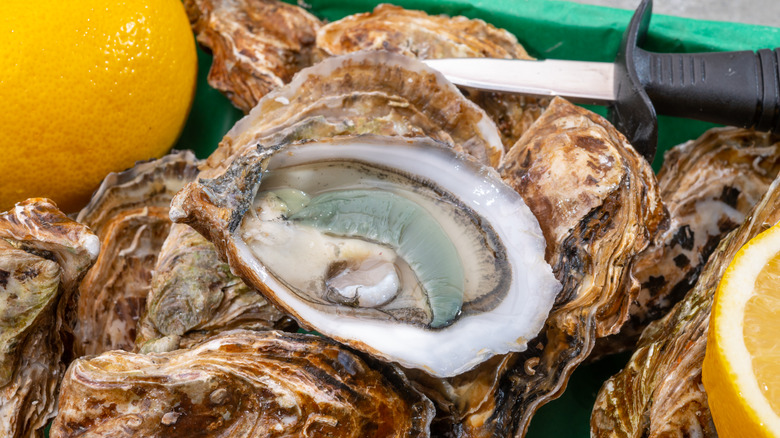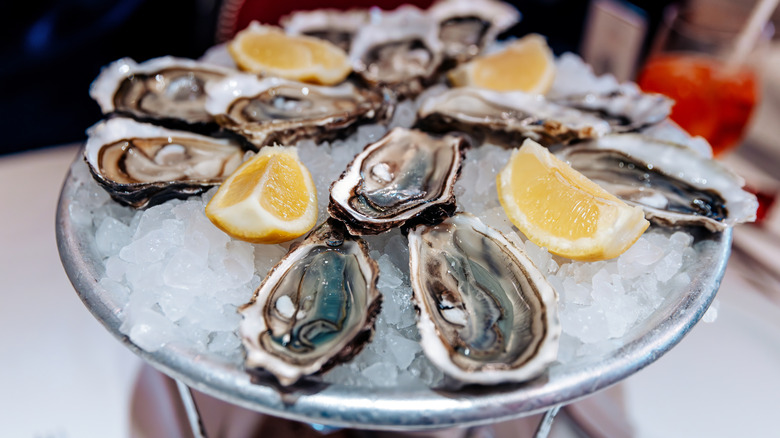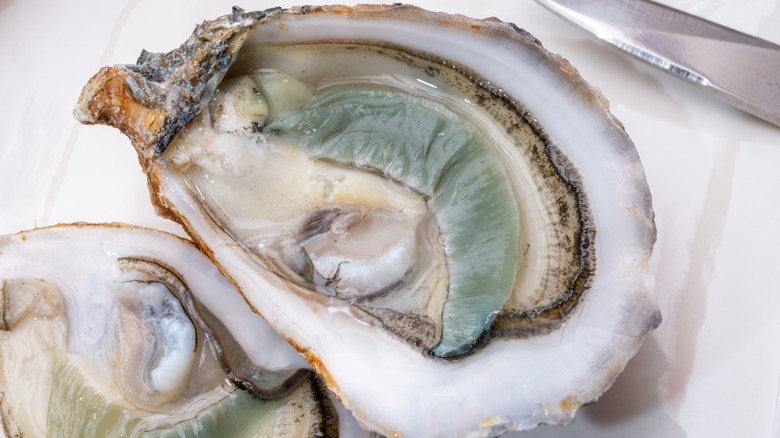What Gives North Carolina Green Gill Oysters Their Signature Hue?
Oysters are a divisive food. Some will happily shell out exorbitant sums to enjoy them raw, while others couldn't be paid to touch the briny delicacy with a ten-foot pole. But even the most confident shellfish eater could be forgiven for being a bit skeptical of a plate of oysters with bright green gills. However, true oyster lovers will tell you those green gills are actually a good thing.
Green gill oysters are a rare delicacy found in only a few places in the world, including coastal North Carolina. Their deep blue-green coloring comes from Haslea ostrearia, a microalgae that produces a powerful blue pigment called marennine. Oysters are filter feeders, which means they are constantly filtering massive amounts of water through their gills and extracting the most nutritious bits –- like algae. When oysters find themselves in the same environment as Haslea ostrearia, their gills are subsequently dyed a lovely shade of green. The North Carolina coast just so happens to be a suitable habitat for both Haslea ostrearia and oysters, thus resulting in a veritable treasure trove of green gill oysters.
North Carolina green gill oysters have a colorful reputation
In France, green gill oysters -– or fines de claire verte –- are carefully cultivated in salt ponds containing Haslea ostrearia. The resulting oysters are prized not just for their color, but for their taste, which is said to be deliciously briny and mushroom-like. They are highly sought after and typically command a much higher price than the boring old white-gilled kind. The colorful shellfish have a long and storied history in France and were apparently a favorite snack of Louis XIV.
In North Carolina, however, green gill oysters haven't always had such a bougie reputation. In fact, in decades past many oyster harvesters and restaurants have had to sell the colorful shellfish at a discount or even -– mon dieu! -– discard them, because there was so little demand for green oysters. Fortunately, thanks to increased education and new research suggesting that marennine pigment could have antioxidant effects and other health benefits, North Carolina green gill oysters have become far more popular in recent years.
How to eat green gill oysters
These days, the production of green gill oysters in North Carolina is expanding, with popular varieties including Atlantic Emeralds, Wild Greens, American Jade, and Divine Pine. I personally prefer grilled oysters (which offer a little decadence), but shellfish aficionados argue that green gill oysters are best enjoyed raw on the half-shell to appreciate their rich and delicate flavor. The taste of green gill oysters has been described as sweet, nutty, earthy, and creamy, and even compared to a sip of champagne or a very expensive truffle.
As a lifelong North Carolinian, I'm ashamed to admit I hadn't heard of green gill oysters until very recently. Now that I've been enlightened, I'm eager to taste them, but unfortunately I'll have to be patient. Despite, or perhaps because of, their expanding popularity stateside, green gill oysters are hard to find. They're also only available seasonally –- although the oyster "R" rule has been overruled and we know that it's perfectly fine to eat oysters any time of year, green gill oysters only take on their signature hue during the winter months. So, if you are lucky enough to come across green gill oysters, you'd be wise to snap them up and savor them well.


